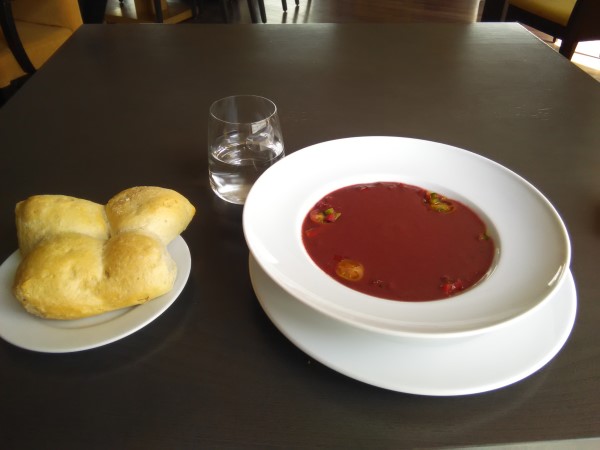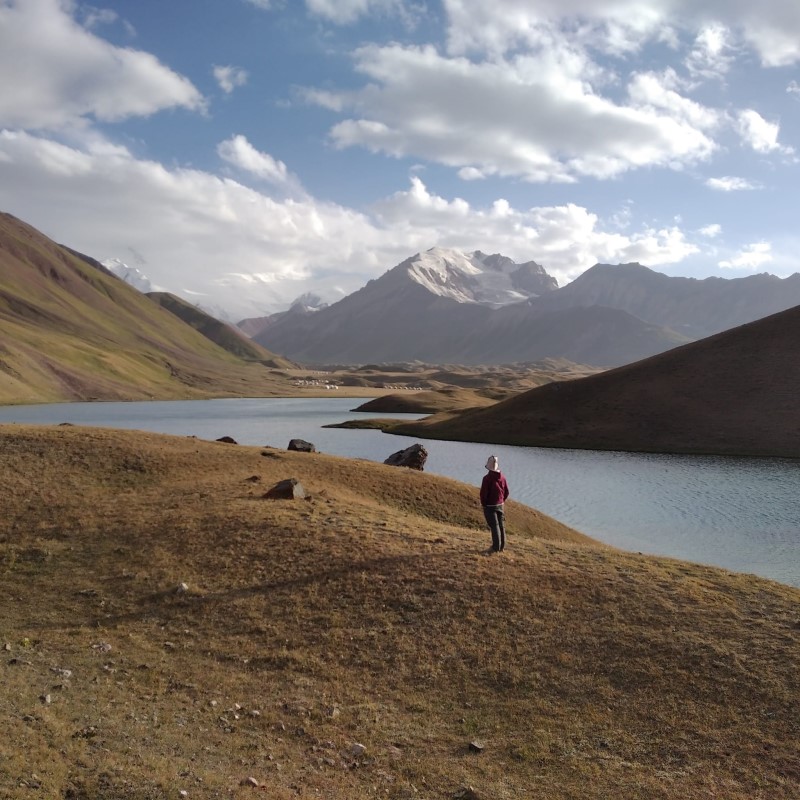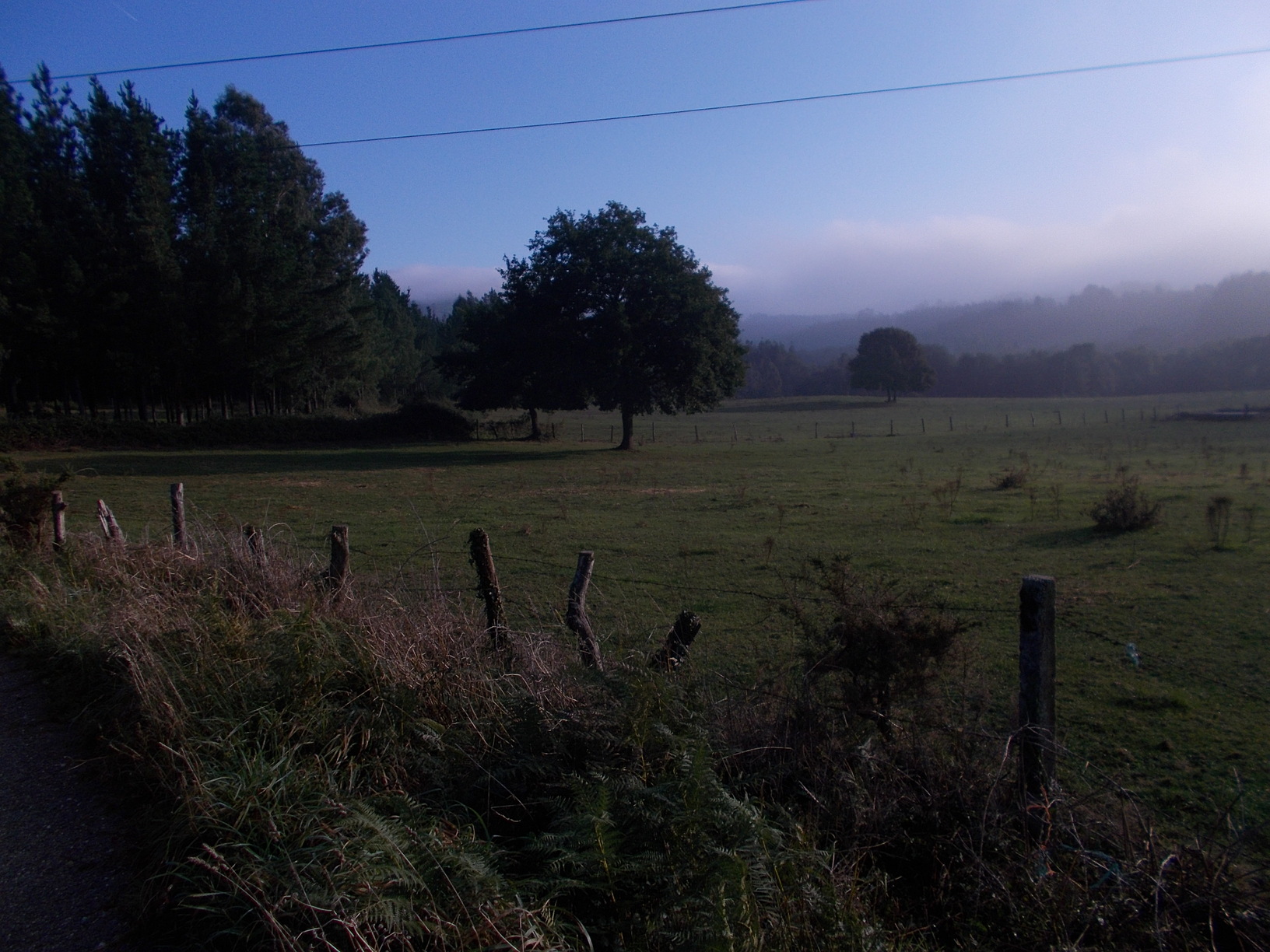Let me put something straight right at the beginning of this article–there’s nothing like one and only best backpack for Camino de Santiago. Because while some people want to pack super-light (and hence will do well with 30 liters backpack), some prefer carrying more weight and enjoying more comforts on their Camino (and need 45-50 liters or so backpack).
And because a skinny women 5.3 foot tall won’t enjoy the Camino very much, if she walks with a backpack that fits well a muscular men 6.4 feet tall. Having said that, there are a few things that characterize any good backpack for the Camino, and I have also hand-picked some great products for each possible situation you may encounter as a pilgrim (light packing, heavy packing with emphasis on comfort, short camino, super long camino with a lot of wild camping). We will look at all these things on the following lines, so stay tuned and I hope that once you’re done with this article, you will know exactly what to buy for your Camino.
Table of Contents
Rule no. 1: Before deciding about a backpack to buy, make sure how many things you want to pack
Ultralight packing is the name of the game for many pilgrims (you can later check my ultralight camino packing list for some inspiration on how to get the weight down to 4 kilos), but that doesn’t mean it is a right philosophy for everyone. Me personally, I’ve never walked with a backpack lighter than 8 kilos (including 1 liter of water), simply because I like some comforts on the Camino. Think at least 2 books in print :), an inflatable mattress (which allows me to sleep outside when I feel like that), a mouth harmonica, and such things. And since I am also on a plant based diet, I always have a bit more food with me (think nuts, dried fruits and stuff), because while you can eat vegetarian on the camino, it isn’t always east to get something immediately.
The point I try to make here is that one of the most important characteristics of the backpack is its size. And Camino can definitely be done with 34 or even 30 liters backpack–if you pack light, and take only the most necessary stuff. If you like to have a few more things on you as I do, than you’ll need 45, or even 55 liters backpack. Another thing to bear in mind is that each backpack has a weight it can support, and for some non-hiking backpacks (some people do the Camino with the “city walk” backpack), this can be quite low. If you overload such a backpack, the straps on your back will start to tear from day one, and after a week you’ll need a new backpack, since the original one will simply be broken… Hence this is one of the things to consider.
Rule no. 2: Buy a backpack fitting for your body size.
Many people do not know this, but backpacks also have sizes! They aren’t typically that many (often only two, S/M and L/XL), since each good backpack has the adjustable back, so you can make a bit “longer” or “shorter” depending on the length of your torso, but this also has some limits. Hence it is pivotal to get the right size, because if your backpack is too small, you’ll just have pain and develop rash and itches.
And when it is too big (which is actually the worse case scenario) you won’t be able to position it properly on your body, the backpack will be too low on you, and both your hips and back will suffer as a result. Believe me, I have seen more than a dozen of pilgrims quit the Camino simply because they had a backpack too large for their body, and developed injuries because of that. Make sure you won’t make the same mistake!
Rule no. 3: Do not try to save too much weight when it comes to straps that help to support your weight on different part o your body.
Of course the weight of a backpack is very important, especially when you try to pack light. There are many backpacks on the market weighting 2.5 kilos (5.5 pounds) and more. You can hardly get your backpack down under 6 kilos when the back alone weights three kilos, without anything inside it yet… However, one place where you should never try to save too much weights are the straps that support the backpack on your chest, and especially the straps that support it on your hips.
Some manufactures make these really thin, trying to save weight. But believe me it isn’t a good idea. These straps should be wide enough and feel comfortable on your body. Only that allows for right weight distribution and will prevent injuries that you will no doubt suffer with a backpack that has these straps super-thin or one doesn’t have them at all.
You should also consider the number of pockets (each pocket makes the backpack heavier, especially if there’s a zip), but having virtually no pockets on the backpack (which is the case with the real super-light packs) also comes with a price. Having pockets means that you can distribute the stuff in the backpack logically. Also it allows you to for example have a mobile phone always at hand, without having to actually carry it in your hand :)… To sum it up, less weight is good, but only when the manufacturer of the backpack saves the weight on the right places.
My recommended Camino backpacks for various situations, weights, men and women
Okay, let’s dive into this. I will now try to present 1-2 great backpacks for affordable price, for each possible situation on the Camino. You can purchase these backpacks on Amazon, in any of their locations, hence regardless of if you will head to the Camino from the US, Canada, Australia, Asia, or Europe, you should be able to purchase the backpacks. Let’s start!
Smaller backpacks for women (lightweight packing)
Let me start with smaller backpacks, for women. The two backpacks I am about to recommend are good if you want to pack light, and do not plan to take a bulky sleeping bag (but rather a small one, or a sleeping bag liner–check my article on best sleeping bags for Camino for more information). They both afford decent support in terms of hip and breast straps, enough pockets, and are reasonably light (both below 1.5 kilograms, or 3.1 pounds) for true light-weight packing. Let’s have a look at them:
| Product | Deuter Women’s Trail Pro 31L SL | Osprey Sirrus 34L |
|---|---|---|
| Picture | ||
| Price | $180.00 Price may vary |
$200.00 Price may vary |
| Best for | Quality / Price ratio | Top quality and comfort |
| Weight | 1.4 kg (1.96 lb) | 1.4 kg (3.2 lb) |
| Capacity | 31 liters | 34 liters |
| Recommended for | Premium quality seekers | Serious pilgrims |
| Amazon | View on Amazon | View on Amazon |
| Matej’s note | I’ve walked once with a girl wearing exactly this backpack. Amazing value for the price and great comfort. | A top-quality backpack with perfect organization. 34L is enough if you pack light. Highly recommended. |
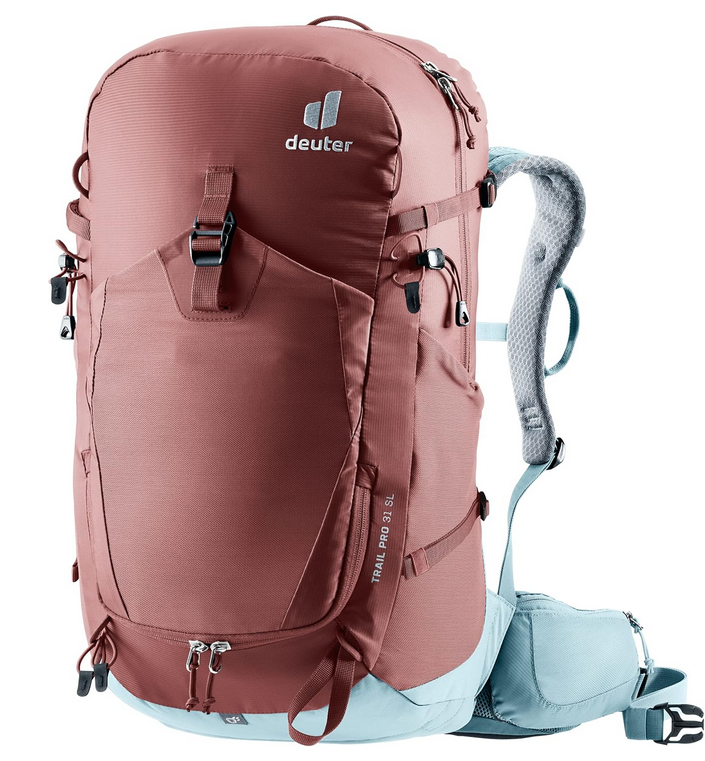
Best for: Quality / Price ratio
Weight: 1.4 kg
Capacity: 31 liters
Matej’s note: Amazing value, great comfort, highly recommended.
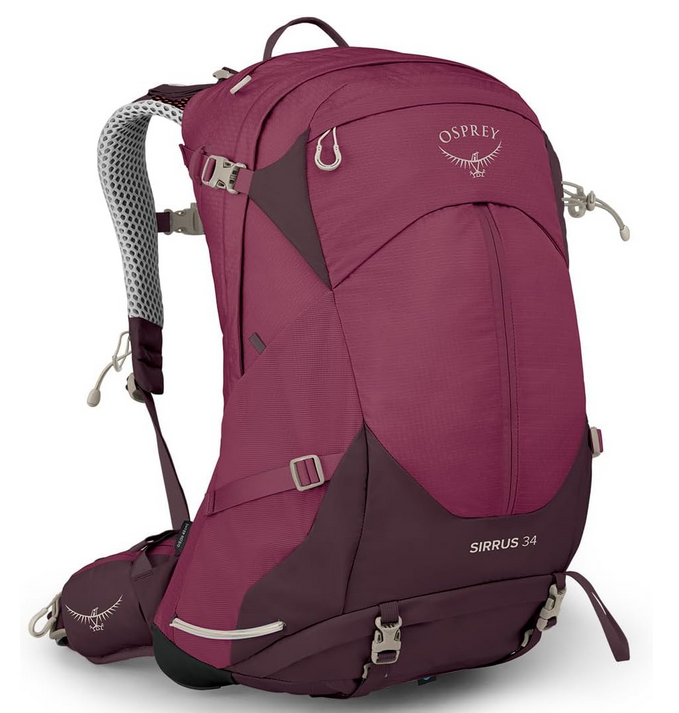
Best for: Top quality and comfort
Weight: 1.4 kg
Capacity: 34 liters
Matej’s note: Perfect organization, ideal for serious pilgrims.
Smaller backpacks for men (lightweight packing)
The same as goes for women section, these are smaller backpacks and you will do with them if you plan to pack light. Needless to say, if you go for a winter Camino or hope take a tent or love to have lot of clothes with you, the size of these backpacks won’t be adequate. But for a pilgrim who’s in Spain for walking and doesn’t mind to wash his walking t-shirt and shorts every day, they are big enough. And good of course 🙂
| Product | Osprey Daylite Plus | Ultraspire Epic XT 3.0 |
|---|---|---|
| Picture | ||
| Price | $70.00 Price may vary |
$165.00 Price may vary |
| Best for | Best quality / price ratio | Top-notch quality, features and design |
| Weight | 0.6 kg (1.3 lb) | 0.95 kg (2.1 lb) |
| Capacity | 34 liters | 33 liters |
| Recommended for | Serious pilgrims | Athletes & pilgrims who want to stand out |
| Amazon | View on Amazon |
View on Amazon |
| Matej’s note | Amazing backpack from Osprey – the reviews speak for themselves. The only downside are the hip straps, which could be wider for better weight distribution. Otherwise, an excellent backpack, especially for the price. | A truly marvelous backpack. Extremely durable, with outstanding attention to detail. Perfect for Camino, long-distance hikes, ski trips, or mountain adventures. Premium quality comes with a premium price. |
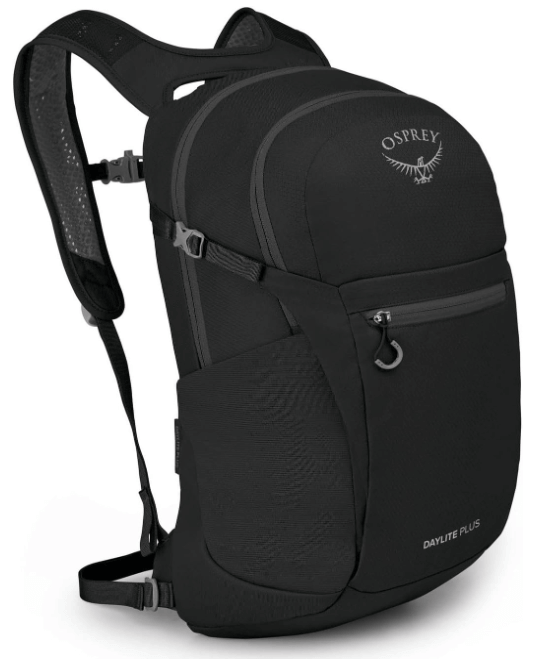
Best for: Best quality / price ratio
Weight: 0.6 kg
Capacity: 34 liters
Matej’s note: Excellent value backpack from Osprey. Slightly narrower hip straps, but otherwise a fantastic choice for pilgrims.

Best for: Top-notch quality and design
Weight: 0.95 kg
Capacity: 33 liters
Matej’s note: Premium, ultra-durable backpack with superb craftsmanship. Ideal for Camino and serious adventures, but make sure it fits your budget.
Bigger backpacks for women (comfort packing)
If you prefer to pack more things, be it clothes, cosmetics, or a one person tent for a nice sleep outside on a hot night, you won’t do with a 30-35 liters backpack. 45 liters is the bare minimum here, and 55 is the norm that will allow you to not only pack your stuff, but at times when needed carry more food on you, or perhaps even a souvenir or two from your pilgrimage :). I handpicked for you one fantastic backpack (beats anything else on offer), and you can see it below:
| Product | Osprey Renn 50L Women’s Backpack |
|---|---|
| Picture | |
| Price | $277.00 Price may vary |
| Best for | Top-notch quality for an affordable price |
| Weight | 1.5 kg (3.3 lb) |
| Capacity | 50 liters |
| Recommended for | Any female pilgrim who prefers to carry more items, such as extra clothes, cosmetics, and comfortable spare clothes for pilgrim hostels, clothes for all sorts of weather conditions etc. |
| Amazon | View on Amazon |
| Matej’s note | Fully functional and beautiful backpack with generous capacity. Ideal for pilgrims who like to feel comfortable during their Camino and in pilgrim hostels. It is also sufficient for more adventurous mountain hikes you may want to do in the future. So you have one great backpack for all your adventures. |

Best for: Top-notch quality for an affordable price
Weight: 1.5 kg
Capacity: 50 liters
Recommended for: Female pilgrims who prefer more comfort and extra gear.
Matej’s note:
Fully functional and beautiful backpack with generous capacity. Ideal for pilgrims who like to feel comfortable during their Camino and in pilgrim hostels. It is also sufficient for more adventurous mountain hikes you may want to do in the future. So you have one great backpack for all your adventures.
– An amazing backpack, comes in 50 or 65 liters variation (for really heavy packing), beautiful colors with 3 options, great hip support, unbeatable reviews, 1.5 kilos (3.3 pounds). The one backpack I’ve seen many pilgrims from the US carry, and not a single one was disappointed with it.
Bigger backpack for men (comfort packing)
Just like for the women, I have hand-picked for you one top-notch backpack when it comes to quality/price ratio. Backpack big enough to pack a small tent in it and a sleeping mat and everything else you need for the Camino de Santiago:
| Product | Osprey Atmos AG 50L Men’s Backpack |
|---|---|
| Picture |
|
| Price | $331.00 Price may vary |
| Best for | Top quality, strong brand reputation among long-distance hikers |
| Weight | 1.95 kg (4.3 lb) |
| Capacity | 50 liters |
| Recommended for |
Any pilgrim who packs more gear and plans to use this excellent backpack also on other journeys after the Camino. |
| Amazon |
View on Amazon |
| Matej’s note | High quality, just the right amount of pockets, and extremely universal. Even if you treat it badly – or the weather does – this backpack will stay with you for years, if not decades. Definitely worth the one-time extra investment. |
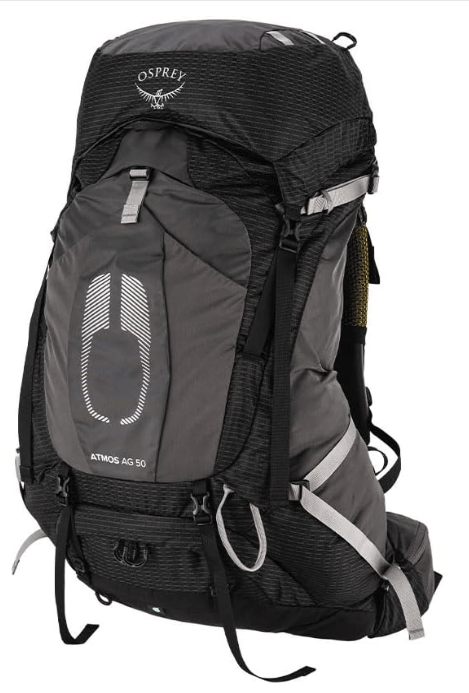
Best for: Top quality and reputation among long-distance hikers
Weight: 1.95 kg
Capacity: 50 liters
Recommended for: Pilgrims who carry more gear and want a backpack for future adventures.
Matej’s note:
Extremely durable and universal backpack with excellent build quality. Even with rough use or harsh weather, it will last for many years. A smart long-term investment.
– The “Creme de la creme” of 50-55 liters backpacks for male pilgrims. Comes with a built-in rain cover, has a perfect location of pockets, super comfy, will endure rough-handling, and basically it’s the one backpack you buy and will take to all your nature trips. Comes in two sizes as well (S/M, L/XL), make sure to pick the right one. The only downside is the weight (almost 2 kilos or 4.3 pounds), however, with this backpack packing ultralight isn’t our goal, hence it isn’t really an issue.
Universal backpack for being completely self-sufficient in Spain
There is one more situation you may encounter. Perhaps you want to connect your Camino de Santiago with some mountain crossings, be it in the Picos de Europa, the Pyrenees, or any other mountain range that is close to one of the pilgrimage routes in Spain. And you want to be self-sufficient, meaning being able to cook on your own stove, having a comfortable tent, and clothes for all possible weather extremes, and of course your own food to cook in the mountains. In such a case, you should look for 65 liters backpack or even a bigger one–to have enough space to pack everything. For women, the bigger 65 liters variant of the Osprey backpack I just recommend (read two paragraphs above) will do the trick. For men, I recommend the following gem:
Teton 65 Liters Explorer (just click it to see all details on Amazon) My highlights for this backpack:
- Very light for its size (just 2.1 kilos/4.5 pounds)
- has a built-in rain cover,
- perfect location of side and hip pockets, pretty comfy and durable, great distribution of weight,
- unbeatable price for this level of quality (similar backpacks of more famous brands start at $300).
Final word on the best backpack for Camino de Santiago
As you can see, choosing the right backpack for the Camino isn’t as easy as it seems. It is important buying one of right size, with the right capacity, and also one that will offer enough support and good weight distribution. I tried to give you some ideas and tips on backpacks I tested myself, or at least talked to pilgrims who carried them. In my opinion, it is better going for a more expensive backpack, knowing it will last you for years after the Camino, than buying a cheap alternative that you will throw to the garbage bin once you return home. Because Camino is love, and most pilgrims do come back :). Ideally with the same backpack…. Buen Camino!
Matej
May also interest you:



![Ultralight Packing List for Camino de Santiago [2025 Edition]](https://caminolovers.com/wp-content/uploads/2022/03/altra-shoes-640-x-480.jpg)
